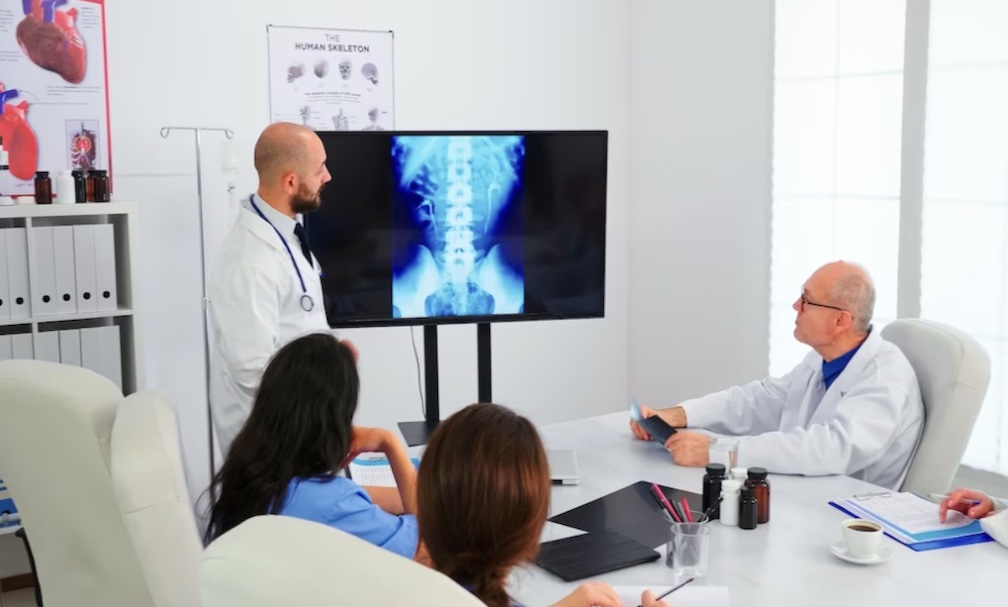Manage Bone Cancer Symptoms and Treatment Plans
- Written by Business Daily Media

Bone cancer is a rare type of cancer that can affect people of any age, but is more common in children and young adults. It occurs when cells in the bones begin to grow and divide uncontrollably, forming a tumor. Bone cancer can start in any bone in the body, but it most commonly occurs in the long bones of the arms and legs.
Like all cancers, bone cancer can be caused by a variety of factors. Here are some of the bone cancer risk factors:
Genetic factors: Some inherited genetic mutations can increase the risk of developing bone cancer. Examples of these include Li-Fraumeni syndrome and hereditary retinoblastoma.Age: Bone cancer can occur at any age, but it is more common in children and young adults.
Previous radiation therapy: People who have received radiation therapy in the past are at an increased risk of developing bone cancer, particularly if the radiation was administered at a young age.
Paget's disease: This is a rare bone disorder that can increase the risk of bone cancer, particularly osteosarcoma.
Exposure to certain chemicals: Exposure to certain chemicals, such as vinyl chloride and arsenic, can increase the risk of developing bone cancer.
Bone diseases: Certain bone diseases, such as osteochondroma and enchondromatosis, can increase the risk of bone cancer.
Gender: Bone cancer is slightly more common in males than in females.
While some of these risk factors are beyond our control, there are some things we can do to reduce our risk of developing bone cancer. For example, avoiding exposure to harmful chemicals and maintaining good bone health through a healthy diet and exercise can help reduce the risk of bone cancer.
The symptoms of bone cancer can vary depending on the location and stage of cancer. Some common symptoms of bone cancer include:
Swelling: The affected bone may be swollen or tender to the touch.
Fractures: Bone cancer can weaken the affected bone, making it more prone to fractures.
Limited mobility: Bone cancer can affect the joints near the affected bone, making it difficult to move the affected limb.
Fatigue: As with many cancers, bone cancer can cause fatigue and weakness.
If you are experiencing any of these symptoms, it is important to see a doctor right away. While many of these symptoms can be caused by conditions other than bone cancer, early detection is key to successful treatment.
The treatment of bone cancer typically involves a combination of surgery, chemotherapy, and radiation therapy. The exact course of treatment will depend on the location and stage of the cancer, as well as the overall health of the patient.
In some cases, the affected bone may need to be removed surgically. This can be a difficult decision for patients and their families, as it can have a significant impact on their quality of life. However, in many cases, surgery is the best option for treating bone cancer and preventing it from spreading to other parts of the body.
Chemotherapy and radiation therapy are often used in combination with surgery to help destroy any remaining cancer cells and reduce the risk of recurrence. These treatments can be challenging, as they can cause side effects such as nausea, hair loss, and fatigue. However, they are an important part of the treatment process and can help improve the chances of a successful outcome.
Conclusion
Bone cancer is a rare and complex disease that can affect people of all ages, but is most commonly diagnosed in children and young adults. It can arise in any bone in the body, and its symptoms are often nonspecific and can be mistaken for other conditions. Therefore, it is important for individuals to be aware of the risk factors associated with bone cancer and to seek medical attention if they experience any persistent symptoms.
Some of the major risk factors for bone cancer include a history of radiation therapy, a family history of bone cancer, and certain genetic conditions such as Li-Fraumeni syndrome and hereditary retinoblastoma. Other factors such as age, gender, and lifestyle habits may also play a role in the development of bone cancer.







